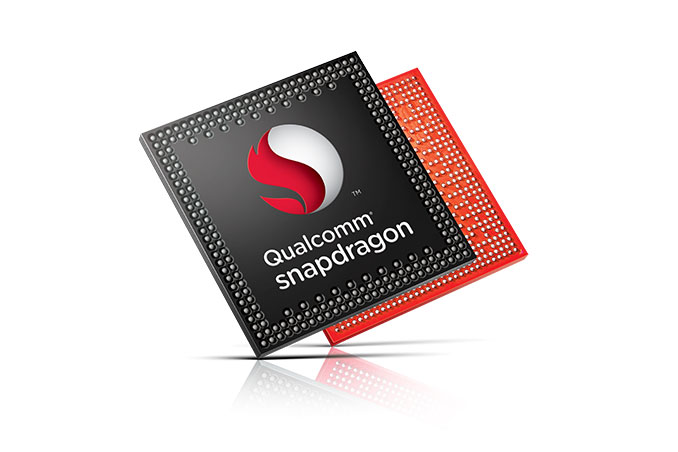Qualcomm's Snapdragon 801 (MSM8974AC): The New 32-bit Flagship Until 805
by Anand Lal Shimpi on February 24, 2014 2:00 AM EST- Posted in
- SoCs
- Qualcomm
- Snapdragon 801

As Qualcomm continues to move its SoCs to 64-bit ARMv8 based cores, there's still demand for high-performance 32-bit solutions today. We're still some months away from Snapdragon 805 showing up in devices, but the next generation of Android flagships is getting ready for announcement at MWC this week. To satiate the needs of its high end customers, Qualcomm is shipping a higher clocked variant of the MSM8974/Snapdragon 800 called the Snapdragon 801 (MSM8974AC).
Architecturally the SoC is identical to its namesake. The Snapdragon 801 features four 32-bit Qualcomm designed Krait 400 cores and an Adreno 330 GPU. The DSP and ISP blocks haven't changed either. And we're still talking about a 2 x 32-bit LPDDR3 memory interface. What is different are the frequencies all of these blocks operate at. The differences are in the table below:
| Qualcomm Snapdragon 800 vs. 801 | |||||
| MSM8974 (Snapdragon 800) | MSM8974AB (Snapdragon 800) | MSM8974AC (Snapdragon 801) | |||
| CPU | 4 x Krait 400 | 4 x Krait 400 | 4 x Krait 400 | ||
| Max CPU Frequency | 2.3GHz (2.26GHz) | 2.3GHz (2.26GHz) | 2.5GHz (2.45GHz) | ||
| GPU | Adreno 330 | Adreno 330 | Adreno 330 | ||
| Max GPU Frequency | 450MHz | 550MHz | 578MHz | ||
| ISP Frequency | 320MHz | 465MHz | 465MHz | ||
| Memory Interface | 2 x 32-bit LPDDR3-1600 | 2 x 32-bit LPDDR3-1866 | 2 x 32-bit LPDDR3-1866 | ||
| eMMC Interface | 4.5 | 4.5 | 5.0 | ||
| Modem | 9x25 IP block, Category 4 LTE | 9x25 IP block, Category 4 LTE, DS-DA | 9x25 IP block, Category 4 LTE, DS-DA | ||
Max CPU frequencies go up by around 8%. I put Qualcomm's official numbers in parantheses next to the numbers that are usually quoted for these parts in marketing materials. Max GPU frequency goes up by a substantial 28%, and the peak theoretical memory bandwidth goes up by 16%. Given that most mobile GPU benchmarks tend to be shader rather than memory bandwidth bound, Snapdragon 801 should do quite well in the usual metrics.
Moving to eMMC 5.0 enables support for up to a 400MB/s interface, which we'll see used by new eMMC solutions like the latest iNAND Extreme from SanDisk. The Snapdragon 801 retains a similar MDM9x25 derived modem IP block with support for Category 4 LTE, while adding support for DS-DA (dual-sim, dual-active).
You should expect to see the Snapdragon 801 used many of the major flagship smartphones announced at MWC this week.










13 Comments
View All Comments
stefan2305 - Tuesday, February 25, 2014 - link
Regarding the MSM8794AB. Yesterday, Sony announced the Xperia Z2. They said it contains a 2.3 GHz Snapdragon 801. I'm reading all over the place that the MSM8794AB is actually a Snapdragon 801. So which is right? Is Sony lying about saying the Z2 contains an 801, or is the MSM8794AB actually an 801?Discbrake - Wednesday, February 26, 2014 - link
Sony Xperia Z2's SoC is an 801. A variation of 801, different from the 801 inside the Samsung Galaxy S5. http://www.qualcomm.com/snapdragon/smartphones/son...stefan2305 - Wednesday, February 26, 2014 - link
In that case, the article above has a typo as the MSM8974AB is listed as a Snapdragon 800.